Project type: User research, interaction design, physical prototype (Leap Motion, Snowboy sound recognition)
Date: Fall 2016
Tools: User enactment, diary study, survey, interviews, affinity wall
Timeline: 3 months
Teammates: Yi Yang, Colin Chen, Kanchi Bhawalkar
Roles: Diary study design, user enactment study design, writer of final report, coder (assistance with Snowboy portion of prototype)
Portfolio / Magic Mira
Smart mirror interactive prototype and user research study
Mira: Your personal skincare expert
Our design, Mira, is a smart mirror. Mira is “smart” in the sense that she provides data driven skincare guidance, reducing the barriers that people face when caring for their skin: the difficulty in tracking changes and the difficulty in finding products and habits that are effective for them personally. Mira lives in the home, blending seamlessly into a person’s everyday routine and home living space. Through Mira, we’ve developed a pervasive technology intervention to help people better understand and improve their skincare and their overall health.
Design walkthrough and demonstration
Motivation
Mira began as an idea – not a physical mirror, but a tool to help people evaluate and monitor their health and skin condition.
Current self-evaluation methods are poor, cumbersome and seldom-used. It is difficult to evaluate skin condition objectively, with no basis for comparison. Tracking requires manual input – photos and written diaries – a tedious process that requires perseverance.

Technology is advancing rapidly – and there is a space for improvement. But how should a better system to promote self -awareness be designed? This experience could take many forms – a mirror, a social interaction tool, a tactile sensor – how can a designer best address users’ needs?
We conducted observations and brief interviews in gyms, cosmetics stores, and high visibility public spaces to gain insight, considering:
Formative study and results
Our exploration taught us that users would be people who are health conscious, with an emotional and sensory connection to their skin care, and an awareness of the condition of their health and appearance.
To refine our concept, we needed to understand these users’ daily lives and motivations and the methods they undertake to maintain skincare and health. We conducted a diary study and a survey to gain insight.
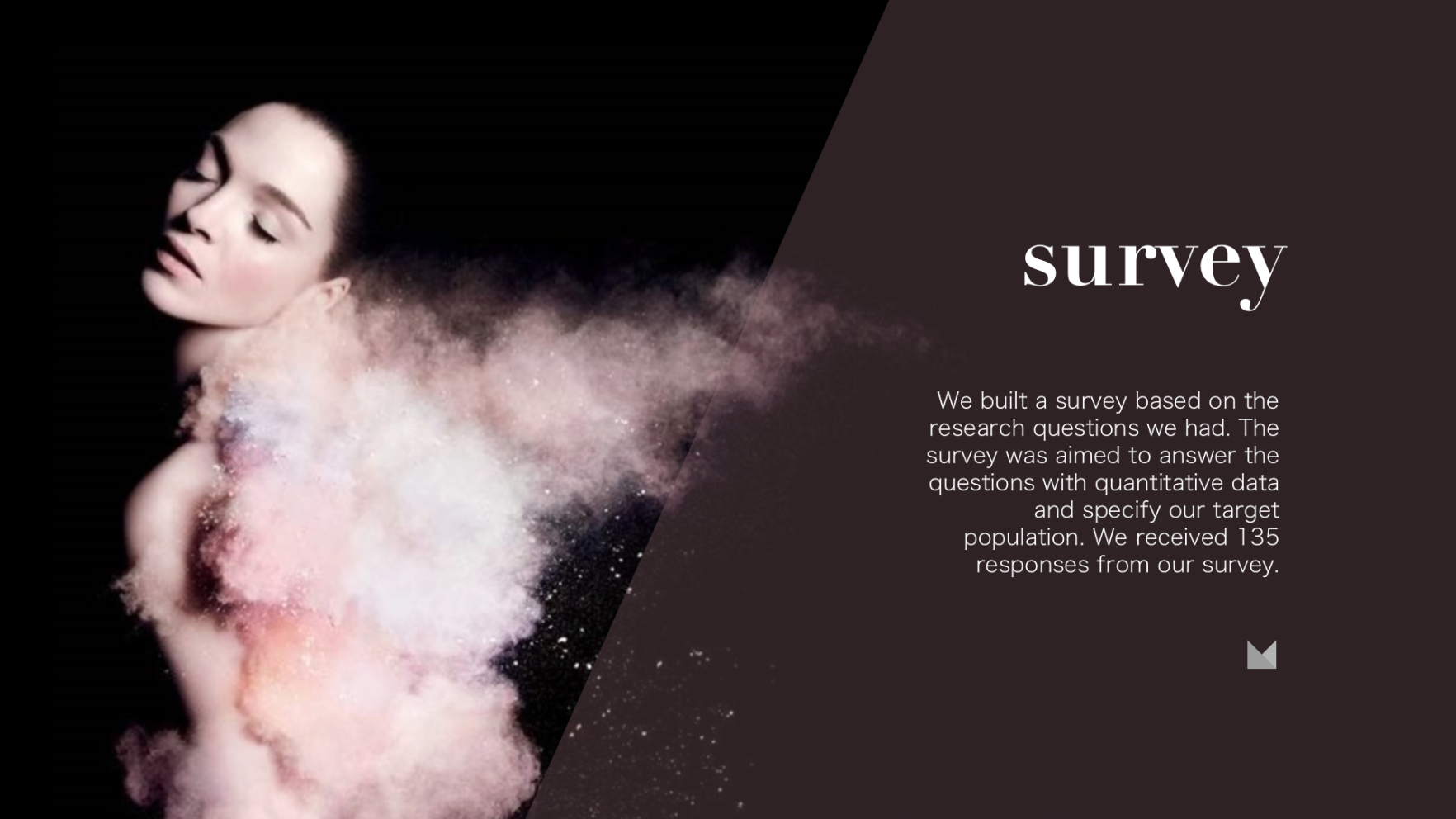
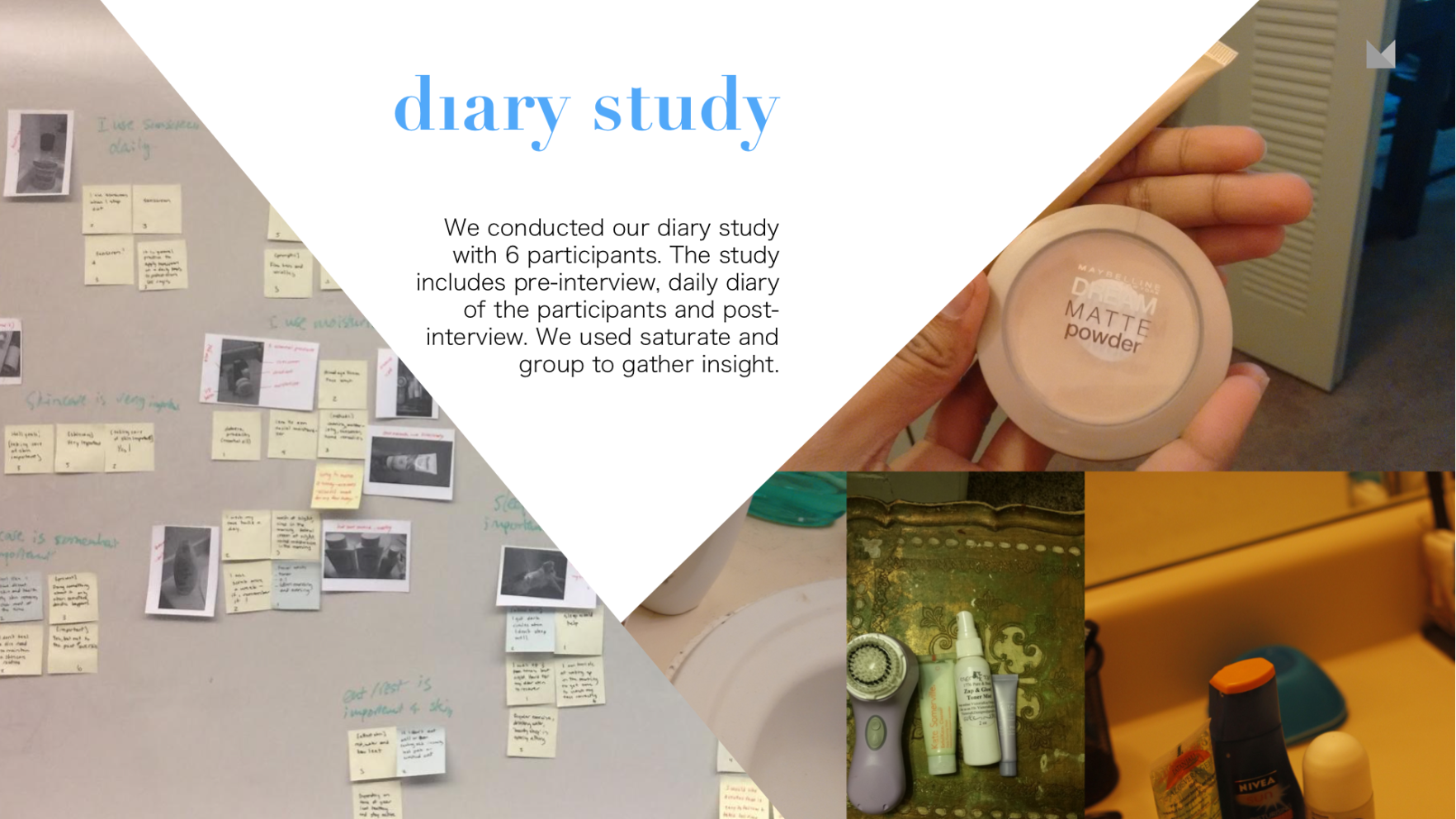
Experience prototype and results
Mira began to take physical form.
We began to test a rough prototype of a mirror self-monitoring concept with users, walking them through basic interactions to explore anticipated points of conflict.
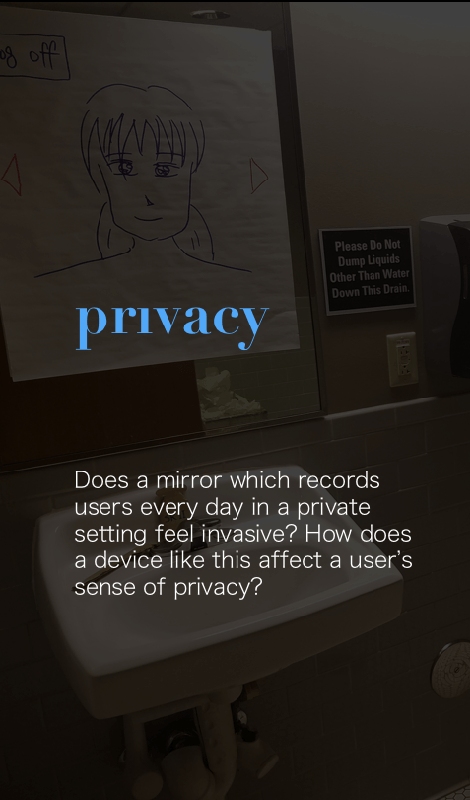

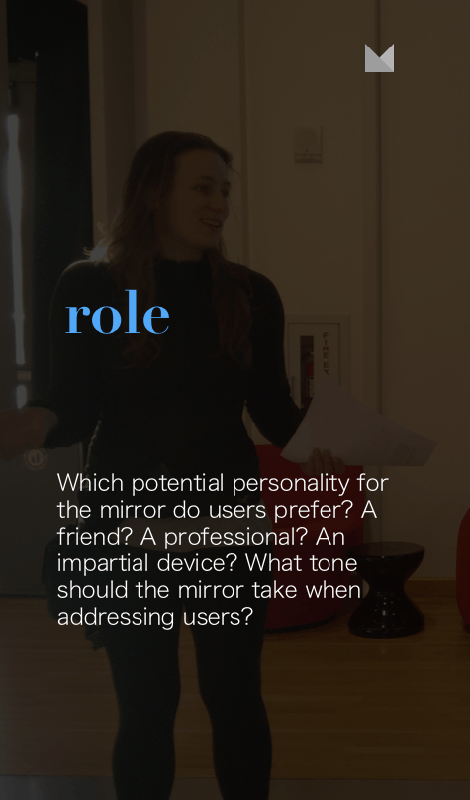
Final system concept
We understood the key features and interactions Mira must have to be effective and were ready to build a prototype:

Accurate Diagnosis – Mira uses advanced algorithms and data from similar users to analyze your skin condition to provide you with actionable feedback.

Effortless input – Mira is a part of your home, and analyzes your health in the background. The normal time you spend in front of a mirror is all Mira needs to assist you.

Tailored recommendatıons– Mira keeps track of variables like weather and your skincare products in order to provide you with the most tailored recommendations.
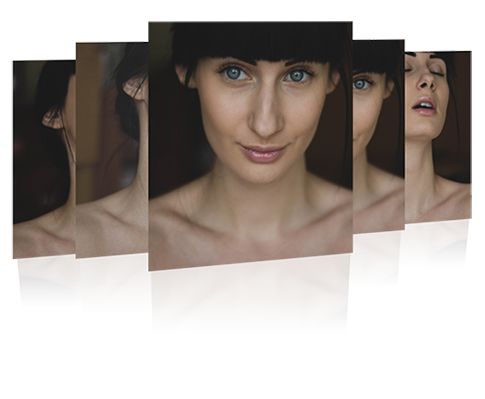
Progress Tracking – Mira records changes in your appearance to help you determine whether your health routine is effective and assist you in identifying health conditions. You can go back in time to see your progress.
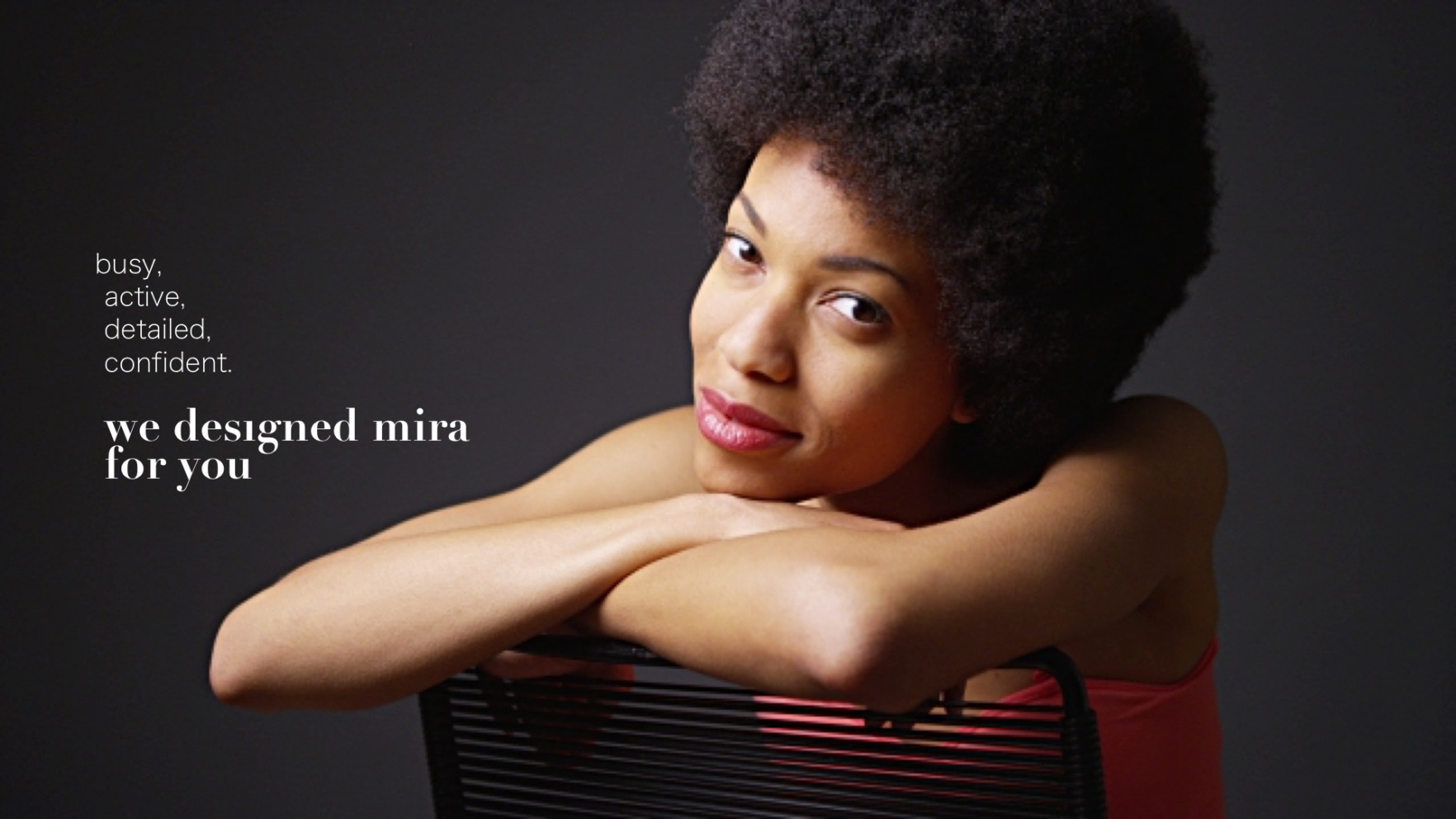
Prototype and key features
We created a demonstration that presents a portion of the experience of using Mira – the look and feel of the device, key interactions using gesture and voice, and the design’s skin analysis, tracking and personalized recommendation features.
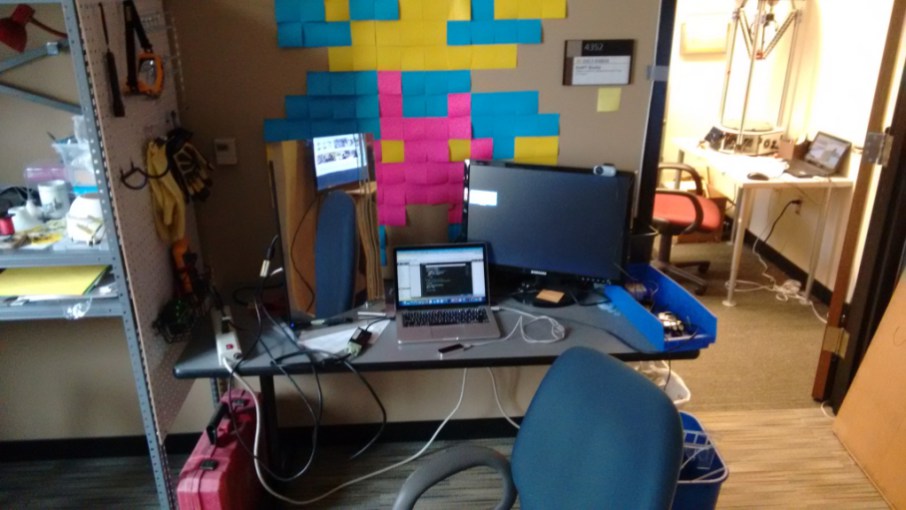

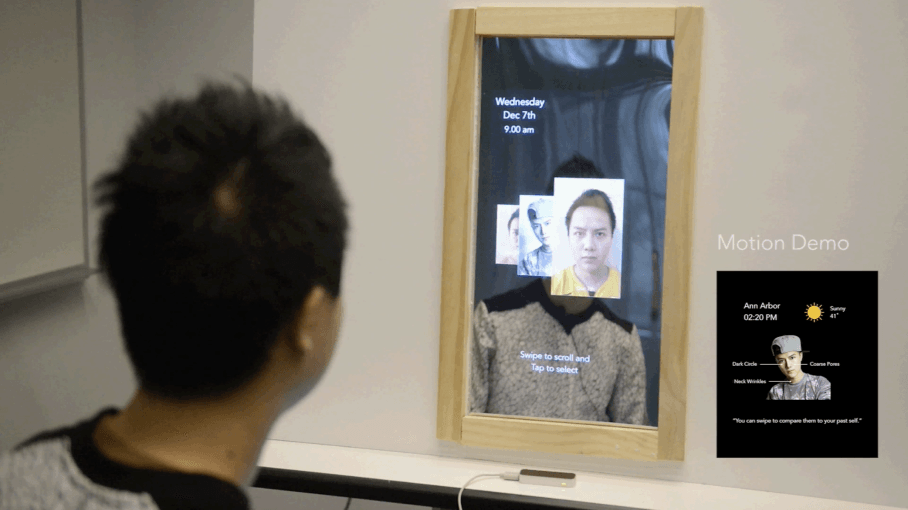
The Mira prototype consists of a display, enhanced by a two way mirror and attached to a hidden laptop. The display is surrounded by a wooden frame, to evoke the look and feel of a real household mirror, and situated on a foamcore “wall,” to obscure its inner workings.
Spoken keywords and gestures trigger the mirror’s interactions – we used Snowboy Hotword detection to establish audio keywords and a Leap Motion controller to sense gesture.
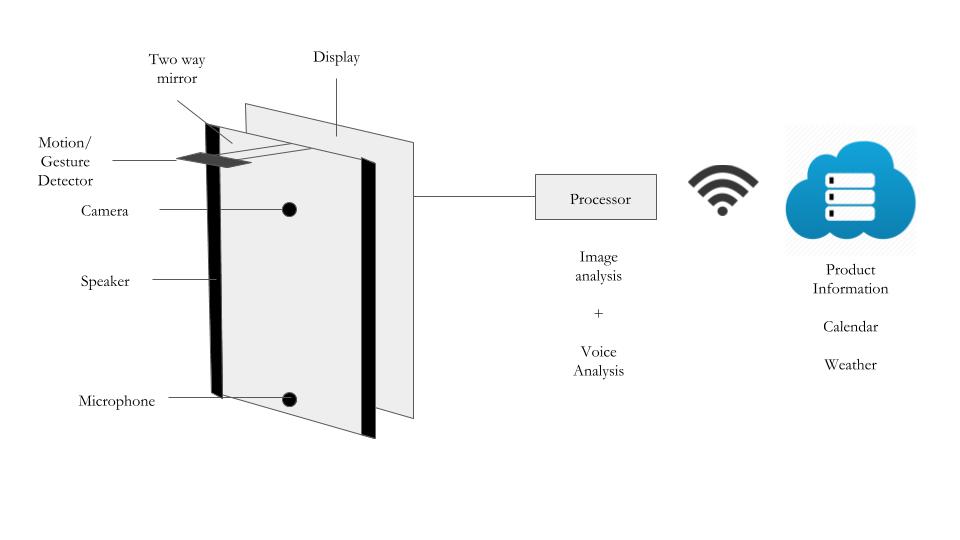
Ideal system proposal
Our prototype could only incorporate a portion of the capabilities our research lead us to include in our ideal design. The technology exists to make Mira a reality in three years time. A device like Mira could revolutionize health and skin care, predicting potential health risks early on, and helping users optimize their skincare routine.
Ideally:
- Mira would be constructed from more aesthetically pleasing materials, to enhance the sensory and emotional aspect of self-monitoring.
- Mira would employ big data cloud computing, drawing on data from all users to make the best recommendations for individual users.
- Mira would employ seamless interaction including touch, and facial and movement recognition in addition to sound and gesture
- Mira would maintain users’ privacy, using advanced authentication methods such as an iris scanner.
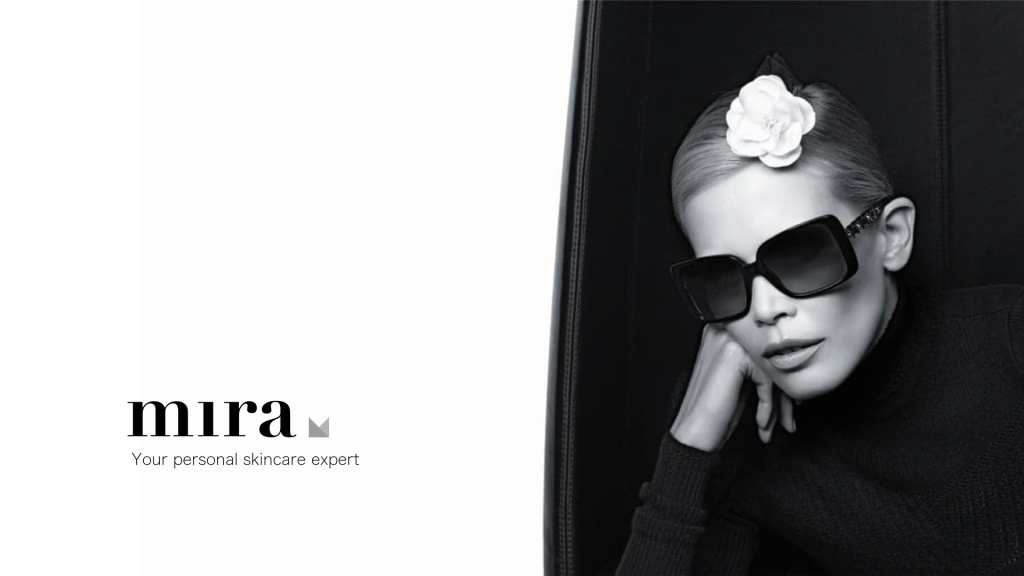
Discussion
Where do we go from here? To continue development, we would explore interaction scenarios that seamlessly integrate Mira into users’ daily lives, accounting for their varied scheduling constraints and developing refined implementations of Mira’s basic functions. The product and context provide fertile grounds for future exploration.
Mira, in its current prototype form, offers limited functionality. Given more time, we would explore how the voice and gesture sensory mechanisms interact and provide solutions to account for users’ privacy and the security. We noticed the co-dependence of these interactions time and again while creating the prototype. Our prototype’s size also impacts its user interface and the placement of its features – an unnatural constraint. We built Mira with the materials available to us rather than selecting the best possible materials for our users and interaction context.
Most significantly, Mira’s impact is closely tied to human emotional and visceral responses – the design’s impact on human responses to “aging gracefully” and to culturally dependent contexts is powerful. Informed by aggregated collected data, Mira could detect mood and emotional changes, protecting individuals from the negative outcomes of anxiety and depression. The degree and purpose of the personalization Mira can provide from the data it collects is Mira’s true power. And with great power, comes great responsibility. It’s critical for Mira to be discreet in addition to connected.
Beauty belongs to everyone, and we all desire health and longevity. Mira is a tool that can teach us to become this way, helping us understand what it means to be healthy and beautiful for each of us – personally.